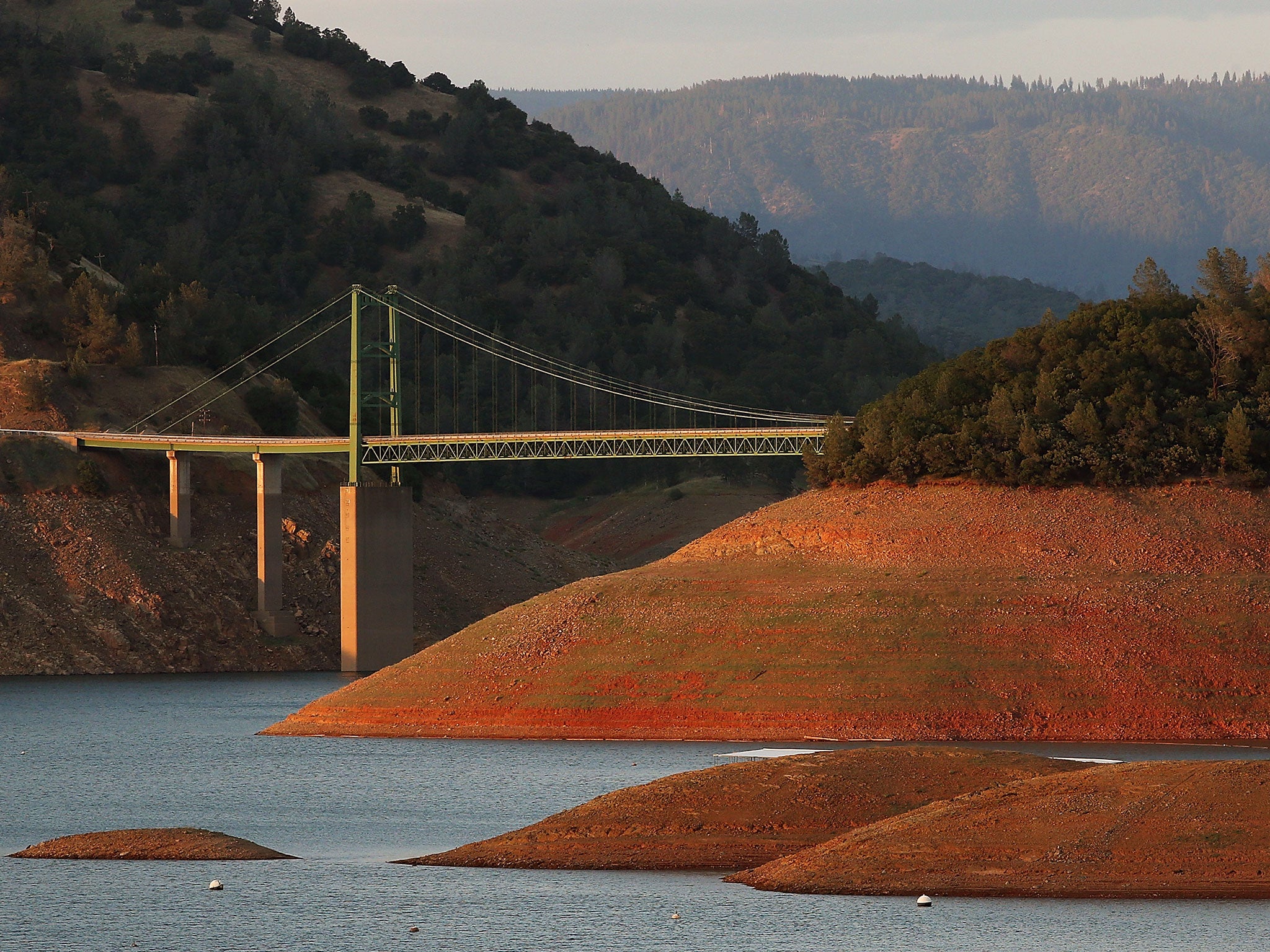California ends water restrictions after El Niño alleviates historic drought
Statewide water restrictions imposed last year have reduced California's urban water consumption by almost 25 per cent

Your support helps us to tell the story
From reproductive rights to climate change to Big Tech, The Independent is on the ground when the story is developing. Whether it's investigating the financials of Elon Musk's pro-Trump PAC or producing our latest documentary, 'The A Word', which shines a light on the American women fighting for reproductive rights, we know how important it is to parse out the facts from the messaging.
At such a critical moment in US history, we need reporters on the ground. Your donation allows us to keep sending journalists to speak to both sides of the story.
The Independent is trusted by Americans across the entire political spectrum. And unlike many other quality news outlets, we choose not to lock Americans out of our reporting and analysis with paywalls. We believe quality journalism should be available to everyone, paid for by those who can afford it.
Your support makes all the difference.California is bringing to an end statewide water restrictions that reduced urban water use by almost 25 per cent, in response to a wet weather spell that has partially alleviated the Golden State’s historic, five-year drought.
Last April, Governor Jerry Brown issued an executive order demanding Californians curb their consumption of potable water by a quarter compared to 2013 levels. The measure forced city-dwellers to minimise their lawn-watering, car-washing and toilet flushing, while water agencies penalised hundreds who were caught wasting water.
But after a winter in which El Niño storms somewhat replenished Northern California’s reservoirs and the Sierra Nevada snowpack, local communities have now been told they will be responsible for setting their own limits on water conservation.
Though El Niño failed to deliver the levels of regular winter rainfall that meteorologists had expected, it did produce above average amounts of rain and snow in the north of the state for the first time in five years. Southern California, which is experiencing another bone-dry year, will also benefit: the state’s water system is set up precisely to transport water from the north and from the Sierras snow-melt to urban population centres in the south.
The drought is far from over, however, with more than 70 per cent of the state still suffering severe, extreme or exceptional drought conditions, according to the US National Drought Mitigation Centre. Despite its improvement on last year, the Sierra Nevada snowpack remains around a third of its customary level for this time of year.
Officials who 12 months ago predicted a future of water shortages and sacrifice, have toned down their warnings, but said Californians would still have to prepare themselves for lifestyle alterations brought on by climate change. The majority of the state’s water is used by agriculture, which was not subject to the urban water restrictions.
“We are still in a drought, but we are no longer in the-worst-snow-pack-in-500-years drought,” Felicia Marcus, the head of the State Water Resources Control Board, told the New York Times. “We had thought we are heading toward a cliff… We wanted to make sure people didn’t keep pouring water on their lawns with wild abandon.”
Though it has lifted its water consumption limits, the state has made permanent some other measures, including a ban on hosing down pavements and driveways and using hoses without a shut-off valve to wash cars. The state will also continue to monitor local water reduction guidelines to ensure communities are behaving responsibly, and could reintroduce statewide targets if officials see fit.
Join our commenting forum
Join thought-provoking conversations, follow other Independent readers and see their replies
Comments